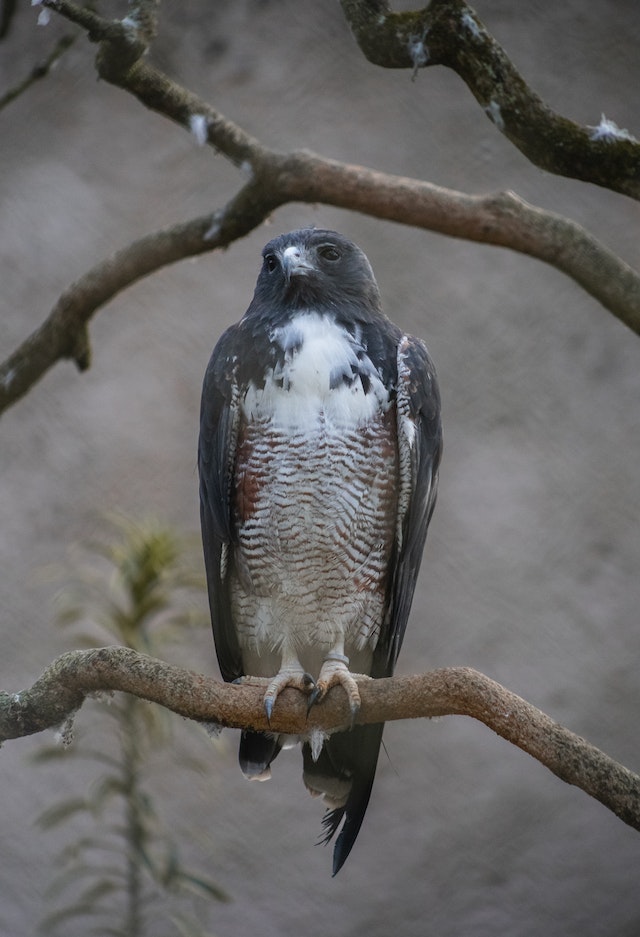
Why can a peregrine falcon fly so fast? Because of their wings, their feathers, their breastbone, their heart, their lungs, and a few other things.
Peregrine falcons are one of 40 species of falcon. They are about the same size as a crow and they are birds of prey. They eat medium sized birds, such as pigeons and parrots. They catch the birds while they are flying, quite often killing them in the air, before flying to the ground to eat them. Their method of hunting is to soar high in the sky, riding the thermals, until they see a bird below them. They have excellent eyesight. When they see a bird, they go into a steep dive, reaching speeds well over 300 km/h. They adjust their trajectory as they head for the prey and flair their wings just before impact, rapidly slowing down and changing their angle so they are talons down. They strike the prey with a closed foot, stunning or killing it with the huge impact. They turn to catch the stunned or killed prey and fly off to feast.
Many people think that the cheetah is the fastest animal in the world. The cheetah, at 112 to 120 km/h, is the fastest land animal, but the peregrine falcon can significantly beat that. A peregrine falcon can dive at 390 km/h. This seems unbelievable because they have to overcome significant air resistance and G-forces on their bodies. For comparison, a human free falls at about 200 km/h. If the skydiver goes into a rigid, head-down position with their arms by their side, they can increase that to 290 km/h. Why is a peregrine falcon so much faster?
The peregrine has several adaptations over other birds which give it its ferocious speed. The first is the bird’s breastbone. A bird’s breastbone is called its “keel” and it is where the wing muscles attach to the bird. Peregrine falcons have very large keels for their size, meaning that a lot more muscles are attached to the wings. More muscle means more and stronger flapping, which helps the birds get up to speed.
The real speed comes when they dive and this is where their wings and feathers come in to play. Their wings are pointed and they have stiff feathers that make them very streamlined. When they dive they tuck their wings in, with the tips pointing backwards. Loose feathers can cause drag, but the peregrine falcon’s stiff feathers all stay neatly tucked in. This, with the sharp profile of their beaks, makes them a falling dart that effortlessly cuts through the air molecules. They can keep their eyes open as they dive and they can make micro adjustments, just like a missile, as they aim for their prey.
All of this lets the peregrine falcon reach incredible speeds, but it wouldn’t be much use if it couldn’t breathe at the same time. If you rode at 390 km/h with your head out of a car window, you wouldn’t be able to take in any oxygen and you would quickly suffocate. Peregrine falcons have nostrils with small bones called baffles that reduce the enormous air pressure so they can still breathe. They also have a one-way airflow system so their lungs stay inflated even when they are breathing out. This helps them to combat the pressure and avoid lung damage. It also keeps a lot of oxygen in their bodies.
Their circulatory system is designed for the speed as well. Their heart beats between 600 and 900 times a minute, pumping a lot of oxygen around their bodies. They have a very high blood pressure, which keeps their blood pumping evenly and continuously. This helps them to avoid fatigue, but it also helps with the G-force when they pull out of their dives. They probably experience 10 to 15 Gs when they come out of their dives, a number that would easily kill a human, but their strong keel, lungs, and circulation mean it has no effect on them.
Sometimes the falcon will miss its prey and it will have to chase it like any other bird of prey, but all of the adaptations they have for flying fast vertically, also help them fly faster than most other birds horizontally as well. They can flap their wings four times a second and they are incredibly streamlined. And this is what I learned today.
Photo by César Coni: https://www.pexels.com/photo/falcon-perching-on-branch-12932103/
Sources
https://www.fai.org/page/isc-speed-skydiving
https://animals.howstuffworks.com/birds/peregrine-falcon-speed.htm
https://www.audubon.org/news/research-reveals-exactly-why-peregrine-falcons-are-so-deadly
https://www.audubon.org/field-guide/bird/peregrine-falcon
https://blogs.bu.edu/biolocomotion/2011/12/12/why-can-the-peregrine-falcon-fly-so-fast/
https://en.wikipedia.org/wiki/Peregrine_falcon
